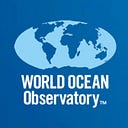Ocean Advertising
The Ocean Has a PR Problem
The biggest single problem facing ocean conversation is the lack of public awareness and political will. Public engagement efforts by agencies, institutes and NGOs are more fulsome than ever, yet the campaigns and power of those invested in the status quo to undermine the data, resist the alternatives, and misinform the public are also as robust as ever.
Special thanks to The Ocean Agency for their generosity
The biggest single problem facing ocean conversation is the lack of public awareness and political will. All the research, all the meetings, all the academic papers and reports, all the determined advocacy by ocean NGOs and their celebrity voices have just not broken through to galvanize support or demand adequate action. Climate change, arguably a function of the ocean, has made some inroads into the political conversation, with some governments recognizing and enabling through financial commitments and strategies at least to adapt to or mitigate the consequences. Thus, budgets and grant programs have begun to focus on understanding and reacting to the recognized realities of sea level rise and extreme weather, certainly for the coastal zones and associated uses, but also for inland areas where the contribution to pollution and acidification by industry and agriculture has gone mostly misunderstood as a point source and aggravating amplification of the problem.
Add to this the power of those invested in the status quo, the millions of dollars invested by big oil and plastic, corporate farmers, the mining industry, and the chemical and pharmaceutical companies, the lobbyists and their political allies, some of whom are blatantly invested in these industries, and their campaigns to undermine the data, resist the alternatives, and misinform the public. One of their most powerful tools is advertising — the expensive television and other ads that use all the tactics of confusion to include mis-information and skewed statistics, glossy representations of the benefits of all this production, and images of happy families indifferent to the corrupted air, land, water, and ocean around them — the invisible negatives of persistent pollutants, acid, and other by-products that underlie as fundamental cause in a world not fully aware of deleterious effect.
The public engagement efforts of the ocean “apparat,” — the accumulation of UN agencies, policy institutes academic programs, and non-governmental organizations — are more fulsome these days, that is, they are more dynamic and frequent in their attempts to reach out to their particular audiences, the narrow confines of their direct constituents and participants, and so, while energetic and packed with announcements of webinars, virtual conferences, roundtable discussions, and published reports, are nonetheless delimited to an audience known and parsed by their existing email lists, memberships, and professional associations. Few propose calls to action other than attendance and participation by colleagues and friends. Few conduct active, amplified social media campaigns with any diligence or consistency. The exceptions are those few with a determined, express purpose and program to connect with supporters through shares and re-posts that extend their exposure, sometimes exponentially. The top five examples of some sixty such successful endeavors that I follow on Facebook are NASA Earth (10.5 million followers), Greenpeace International (3 million), Sea Shepherd (1 million), Ocean Conservancy (1 million), and Oceana (1 million). To my astonishment, the World Ocean Observatory sits at number 6, just below the 1 million mark but rising.
None of this is a surprise in that the Internet and social media are perfectly designed for this kind of communication and engagement, if, like any tool, someone chooses to use it well. The same goes for additional platforms — Linked In, for example, where the World Ocean Observatory has built a network of over 12,000 ocean professionals and decision-makers worldwide with whom we can communicate and share programs, opinions, innovations, and solutions. All of this effort is based on, and celebrates, the success of others as an aggregated volume of ocean information shared relentlessly far and wide.
But this may be changing. This week I opened The Economist magazine to find a two-page spread entitled “The Invisible Wave — Getting to Zero Chemical Pollution in the Ocean,” about the Back to Blue Initiative underwritten by The Economist Impact Project and The Nippon Foundation. The spread was a digest of an academic report compressed to summary findings, with simple graphs to visualize changing factors, such as “Estimated Chemical Pollutants Emitted by Human Activity” and “Eastward Shift: The Chemicals Industry Projected Sale in Asia.” The text explained the growing global chemical pollution problem, the predominate cause, and the interrelation of chemical pollution in the ocean to climate change and plastic waste. There is an analysis of “the cost of inaction.” There are recommendations for change by producers, regulators, the financial community, and the public. The conclusion is as follows: “The ocean is fundamental to life on Earth. It more than possible to prevent chemical pollution from inflicting irreparable harm on the ecosystem. But failing to act now has devastating consequences.”
The combined circulation, print and online, of The Economist magazine is 1.6 million. As a measure of social media connection, The Economist Facebook group is 10.5 million; its LinkedIn membership is 11.1 million; its Instagram followers 5 million; its weekly email distribution 2.2 million. Altogether the combined audience must equal over 100 million connections a year, with an educated, committed, politically sophisticated, financially savvy audience of individuals in positions of responsibility and influence, each one a potential agent for change. Inform them, recruit them, invite them to become allies and amplifiers for the protection of the world ocean.
Now that’s real communication.
PETER NEILL is founder and director of the World Ocean Observatory, a web-based place of exchange for information and educational services about the health of the world ocean. He is also host of World Ocean Radio, upon which this blog is inspired. World Ocean Radio celebrates 13 years this year, with more than 625 episodes produced to date.
